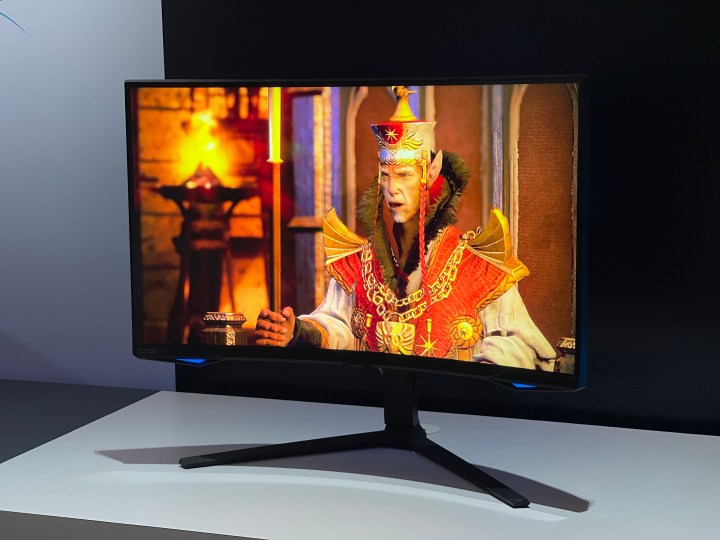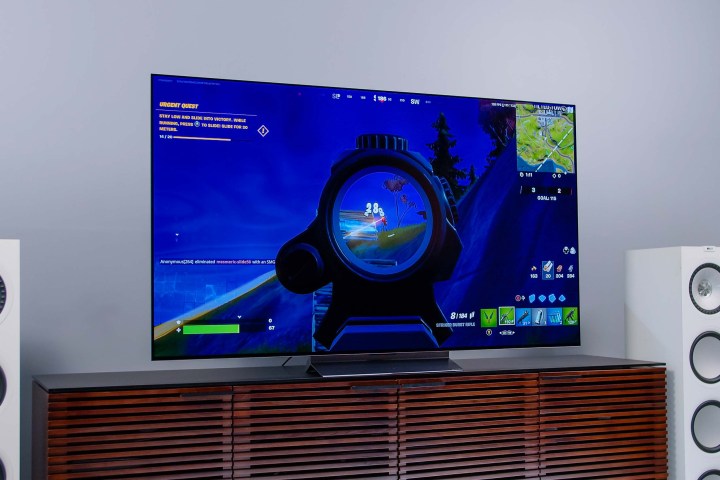VRR, or variable refresh rate for short, is a feature for monitors, TVs, and other kinds of displays that significantly improves the viewing experience, from games to movies to just browsing the web. It’s one of the most important innovations for display technology made in the past decade, next to 4K resolution and HDR.
Even if you’re a newcomer to the technology, you’ve probably seen VRR in action; that’s how universal it’s becoming. That makes it more important than ever to understand VRR and decide if you should start using it.
What is variable refresh rate?

Variable refresh rate is a technology that allows your monitor or TV to dynamically adjust its refresh rate based on the frame rate of the content you’re viewing. Every monitor needs to refresh its image each second, and that’s the refresh rate (measured in Hz). Similarly, movies, TV shows, and games each show a number of frames per second (fps).
In an ideal world, your refresh rate and frame rate will match up at all time, but that’s not the reality in most cases. Your refresh rate and frame rate often become out of sync, especially in video games, which can cause some nasty visual issues (more on that in the next section).
When you’re viewing a piece of media, the amount of images you see depends on both the framerate of the media itself and the refresh rate of the display. Whichever is the slowest is the speed you’ll see your media at. So, if you’re watching a movie at 24 fps on a 144Hz monitor, you’re going to see the movie at 24 fps. But if you’re playing a game like Counter Strike: Global Offensive on a 60Hz monitor, you will only see 60 fps even if the game is running at 100 fps or even 1,000 fps. A high refresh rate monitor will show you more unique frames.
The problem with screen tearing

When media runs at a frame rate that isn’t equal to the refresh rate of the display, it can cause screen tearing, a very ugly visual bug that happens when the display is forced to show two different frames at the same time. For example, a 30 or 60 fps video viewed on a 60Hz display won’t have screen tearing, but a 35 fps video will.
Screen tearing wasn’t really a problem for a while since all the content we watched had the right frame rate for the display: 30 and 60 fps for TV at home, and 24 fps for movies at the theatre. But screen tearing became more and more of a problem for people as gaming, particularly on PCs, became more and more popular.
PC gaming is unique in that there’s almost an infinite combination of PC parts one can use to game. But the problem is, you can never expect a perfect 30 or 60 fps in every single game at every single moment. Even if you were running a constant frame rate, you would still get screen tearing unless you were getting exactly 30 or 60 fps. For many years, VSync was the only solution to screen tearing in games, but all VSync does is basically limit your frame rate, and nobody likes doing that. It was never fun to choose between a higher frame rate with screen tearing or a lower frame rate without screen tearing.
Where you can find VRR
In 2014, everything changed when VESA, an international non-profit that sets standards for a variety of electronics, added Adaptive Sync to DisplayPort, which is basically HDMI but specifically for PCs. Adaptive Sync was the first implementation of VRR technology, which allows the display to change its refresh rate to match the frame rate of media. For gamers, this meant running games at a frame rate other than 30 or 60 fps without screen tearing was finally possible, as long as the frame rate was between the maximum and minimum refresh rates of the display.
AMD, Nvidia, and Intel support Adaptive Sync on their modern GPUs, though this wasn’t always the case. AMD has been a firm supporter of Adaptive Sync, and the company even launched its own special version of the standard, FreeSync. Initially, Nvidia decided to launch its own proprietary VRR technology called G-Sync for desktop GPUs, while laptop GPUs used Adaptive Sync. It wasn’t until 2019 that Nvidia finally allowed its desktop GPUs to use Adaptive Sync and FreeSync monitors, a change that was great for Nvidia users who up until that point were forced to buy expensive, albeit high-quality, G-Sync panels.
The first non-PC device to support VRR was the Xbox One, which received support for FreeSync in 2018. Microsoft’s current-generation Xbox Series X and Series S consoles also support FreeSync. Meanwhile, Sony hasn’t pursued VRR with the same enthusiasm as its rival, and in April 2022, finally announced VRR support for the PlayStation 5. Although the PS4 could probably be updated with VRR support (the underlying hardware is nearly identical to that in the Xbox One), Sony hasn’t said anything about the PS4 and VRR support, so it probably isn’t happening.
High-end TVs have been slowly adopting VRR as well. The LG C2 OLED (pictured above) is one example of a recent TV that supports the display tech.
2020 was an important year for VRR outside of gaming, as it was the year that Samsung’s Galaxy Note 20 Ultra launched and it was the first phone to support VRR. Ever since, many high-end and mid-range phones have included support for VRR. Phones in particular benefit from VRR because changing the refresh rate dynamically can also save power in addition to making the viewing experience more pleasant.
Although VRR technology is becoming more widely adopted, it isn’t available on every display. It’s somewhat rare to find the feature outside of gaming monitors, gaming laptops, and high-end phones. It’s only a matter of time before VRR becomes the norm, though, much like 1080p resolution and the 16:9 aspect ratio.
Editors' Recommendations
- AMD is finally taking FreeSync to the next level
- FreeSync or G-Sync? VESA may soon solve that dilemma
- How to adjust display refresh rate in Windows





